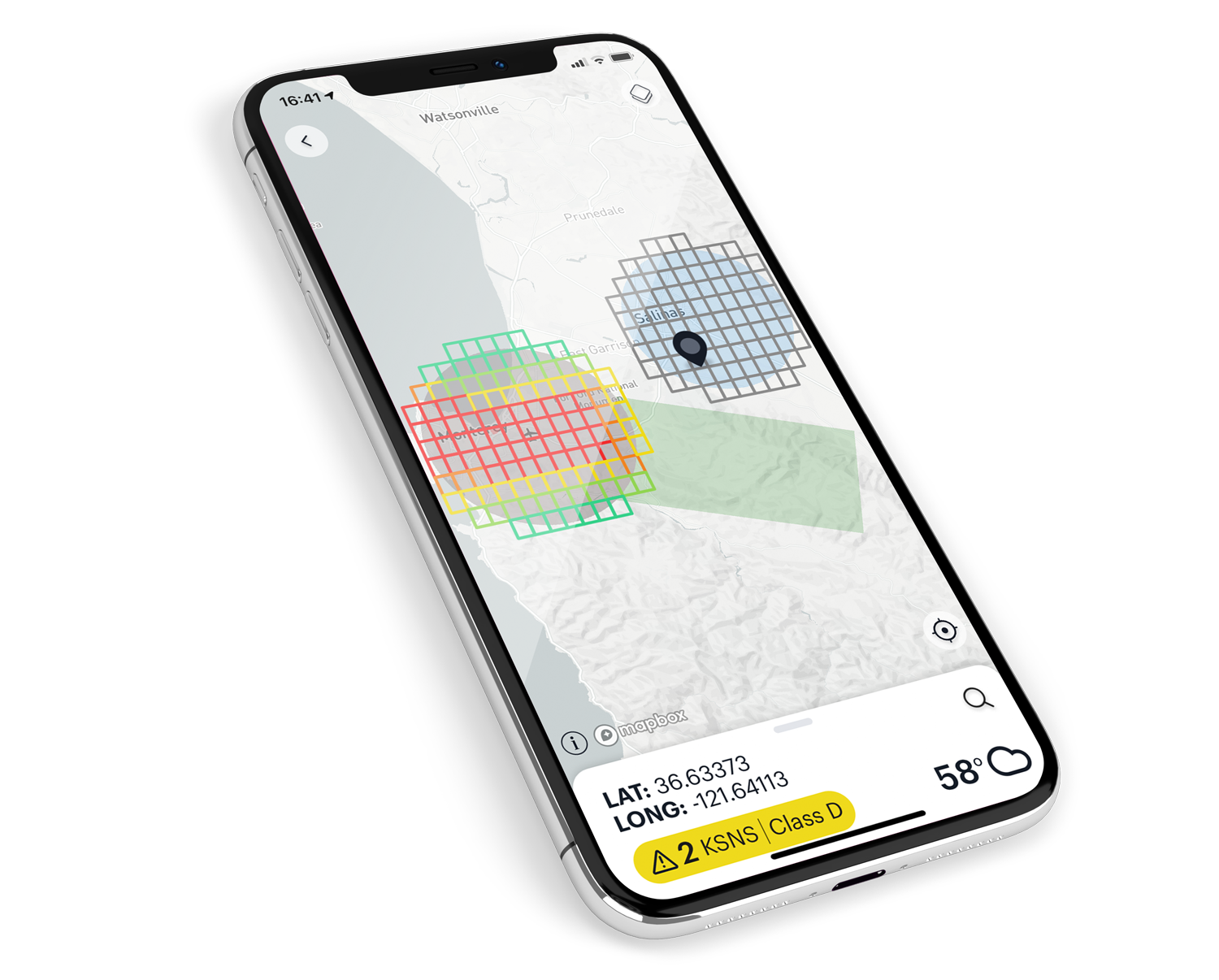What is LAANC?
At Kittyhawk, we talk a lot about LAANC, the FAA’s Low Altitude Authorization and Notification Capability (LAANC) program. LAANC is designed to provide drone pilots with access to controlled airspace and give Air Traffic Professionals visibility into where and when drones are operating. Kittyhawk is a FAA authorized LAANC provider, which means that drone operators can use the Kittyhawk platform to request an airspace authorization via LAANC.
We encourage our customers to use LAANC wherever possible, since we believe it is the most efficient way to access controlled airspace. Even though LAANC is active at over 600 airports and more airports are being added regularly, LAANC is sometimes either not available or may not be the best available option for the mission at hand.
Kittyhawk’s LAANC page answers a lot of basic questions about LAANC and flying in controlled airspace, but one question we often receive from our user community and wanted to address is “How do I know when I can’t use LAANC and what do I do instead?”
How do I know whether or not LAANC is available at a specific location?
There are multiple ways to determine whether or not LAANC is available at a specific location. A good first step is to check out Kittyhawk’s LAANC Locator Tool on our website or the FAA-published list of airports covered by LAANC.
Next, it is crucial to understand the airspace in which you plan to operate, specifically whether or not your operation will be in controlled airspace. For more help understanding whether or not you are in controlled airspace and what that means, we recently wrote a blog post describing how to determine this information.
If you are using Kittyhawk, you can determine quickly whether or not an airport is LAANC-enabled by looking at the airspace map. LAANC-enabled airports show up in multiple colors depicting the different allowable altitudes from the UAS Facilities Map while airports that are not LAANC-enabled show up in gray.

This example illustrates the difference between an airport where LAANC is enabled and an airport that is not LAANC-enabled. You can see that KMYF (Monterey, CA) is a Class C airport with LAANC, and you can tell because the grid overlaying its Class C airspace is multicolored to show you allowable operating altitudes. KSNS (Salinas, CA) is a Class D airport without LAANC, which you can tell because the grid is gray to show that LAANC is not enabled there.
What are my other options besides LAANC?
The options available to request an airspace authorization to operate a drone in controlled airspace are to use LAANC or apply for an authorization through the FAA’s DroneZone.
(Note: This post discusses only airspace authorizations, not waivers. Waivers are applied for and granted only through the DroneZone, and give the applicant permission to deviate from a specific provision of Part 107 rules for commercial drone operations. Authorizations give the applicant permission to operate at a specific time and place while otherwise following all the rules of Part 107.)
While LAANC can handle a large majority of proposed operations, some operations are too complex or outside the usual parameters to immediately receive authorization through LAANC. Some examples of this are operations above the altitude depicted in the UAS Facilities Map, operations across a particularly wide area, or operations requiring waivers. Some may still be able to use LAANC, albeit through LAANC’s “Further Coordination” process, which we will explain in a later post, while some will have to use the DroneZone.
If you will be operating at multiple locations without much predictability, LAANC will be your best tool because it is easy to update your authorization on the fly. If you will be operating for a longer period of time in a specific area, an authorization via DroneZone will be best, since LAANC authorization are only valid for 12 hours, but authorizations via the DroneZone can be valid for multiple years.
If I’m not using LAANC, what does that process look like?
If utilizing the DroneZone for your airspace authorization, go to https://faadronezone.faa.gov/#/. There, you will input your personal and operational information via the web browser, and submit the request online.
First, contact information for the “Responsible Person” is needed. This is the person responsible for the safety of the operation, and likely the person who the FAA will contact first if they have questions about your authorization application or use of the authorization once approved. In an enterprise drone program, the Responsible Person should be either the leader of the drone program or the head of aviation safety.
Second, operational information is required, including the date(s), time(s), location(s), altitude(s), of the proposed operation and how frequently operations may occur. You will also be required to submit a description of the proposed operation and whether or not you will be using any waivers with the operation.
Can I use a LAANC authorization with a night waiver?
The FAA does not currently allow LAANC authorizations to be combined with any Part 107 waivers, including a Part 107.29 waiver for operations at night. Airspace authorizations to use with a Part 107 waiver must go through the DroneZone. For example, if you want to fly in controlled airspace at night using your 107.29 waiver, you must submit a request through the FAA’s DroneZone.
Andrew Elefant
Andrew Elefant is the Director of Legal & Policy at Aloft, an enterprise drone software company. Andrew is a licensed attorney in California. He is also an experienced Private Pilot with Instrument and Multi-Engine ratings, as well as a certificated Remote Pilot.



